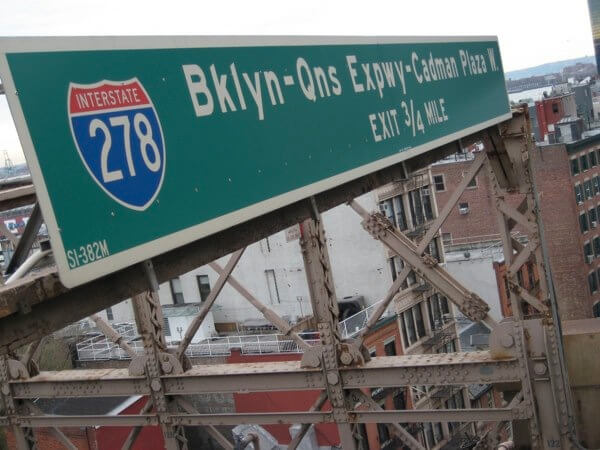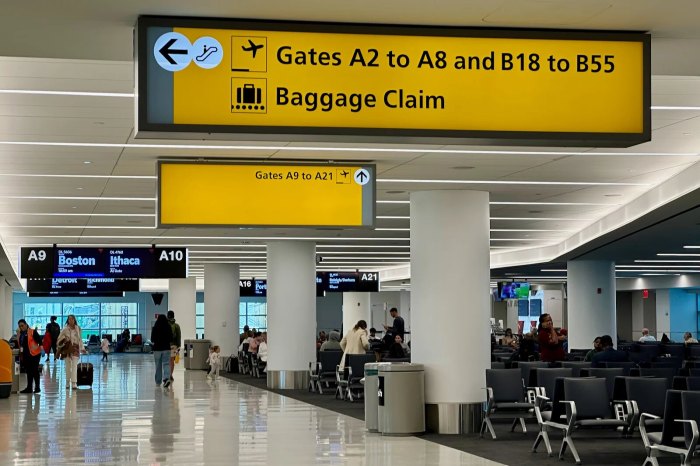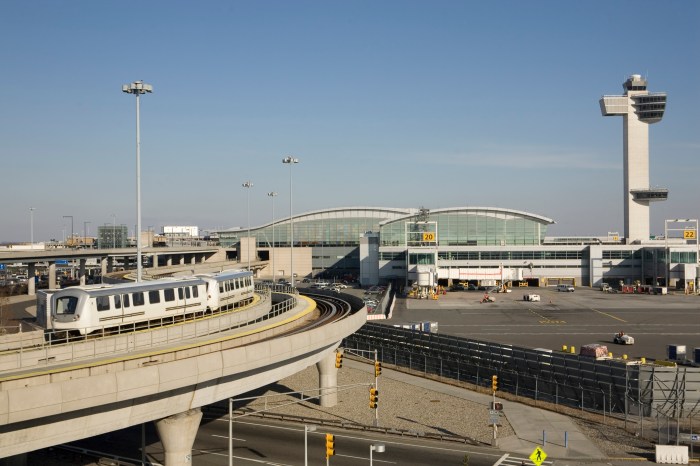By Mark Hallum
The city Dept. of Transportation unveiled some of the options it is considering for the tricky revamp needed on the stretch of the Brooklyn-Queens Expressway along Brooklyn Heights, the effects of which are expected to resonate throughout the city.
A Sept. 20 press briefing saw DOT Commissioner Polly Trottenberg exasperated over what she claims was a shoddy mid-century build effort by Robert Moses that is reaching an early expiration date and has limited options for diverting traffic.
A temporary elevated roadway will be built above the work zone which will reduce traffic down to two lanes while the new permanent roadway is under construction, according to the DOT.
“It is like a lot of Moses’ infrastructure, unfortunately: done on-the-cheap, substandard, hitting the end of its useful life,” Trottenberg said. “What one ordinarily does in other scenarios — and you can think about some of the big bridges or what was done on the FDR Drive some years ago — when you have a bridge or a roadway that carries a huge volume of cars and you need to repair it, you will often build a temporary structure next to it, divert the traffic and fix the existing structure. I think everybody knows our challenge here is you can’t really put a highway right next to this one because we’ve got one side, Brooklyn Heights, and on the other side a park, residential buildings, hotels, etc.”
Trottenberg said that if major reconstructions are not made soon to the tiered roadway structure, the city will have to begin putting weight restrictions by 2026, which will have major impacts on the surrounding communities.
The DOT is still mapping out an approach to the estimated $3-4 billion rebuild effort expected to take six years to complete, and is leaning toward keeping two eastbound and two westbound lanes open for drivers on temporary roadway, which they believe will still cause backups of three to 12 miles, according to DOT.
Mayor Bill de Blasio said on Inside City Hall that the BQE shutdown is similar to the L train shutdown. New Yorkers were polled and answered in favor of total shutdowns to finish work as soon as possible, as opposed to partial shutdowns that cause just as inconvenient hemorrhages in flow of traffic.
“But the question was do you want an alternative that maybe a little more gentle on that immediate area but will push a huge amount of traffic out in to the whole surrounding area of Brooklyn and take a substantial amount longer, or do you want to pull the band aid off, get it done as quickly as possible, and keep traffic moving and keep out of the streets of Brooklyn. That’s why this plan makes sense,” de Blasio said. “Okay, so the work has to be done, do we want it to take six years or a lot longer? I think everyone would say, as we saw in the case in the L train too, people actually were surveyed, they said get it over with, do whatever it takes but get it done in the shortest period of time possible.”
De Blasio said his administration is in favor of reducing the affects on communities as much as possible by keeping overflow on a temporary roadway structure.
“For better or for worse, some of these Moses-built highways — which we can all have our feelings about them and the parts of the city they destroyed — but now the city has grown around them,” Trottenberg said.
The triple-tiered section of the BQE called the cantilever is most problematic for the vibrations caused to surrounding structures, according to the DOT.
The state, under the direction of Gov. Andrew Cuomo, is currently in the process of building the second span of the Kosciuszko Bridge — the first half was completed in 2017 — which is expected to be opened by 2020 and is set to ease the flow of traffic over Newtown Creek between Maspeth and Greenpoint.
Reach reporter Mark Hallum by e-mail at mhall




































